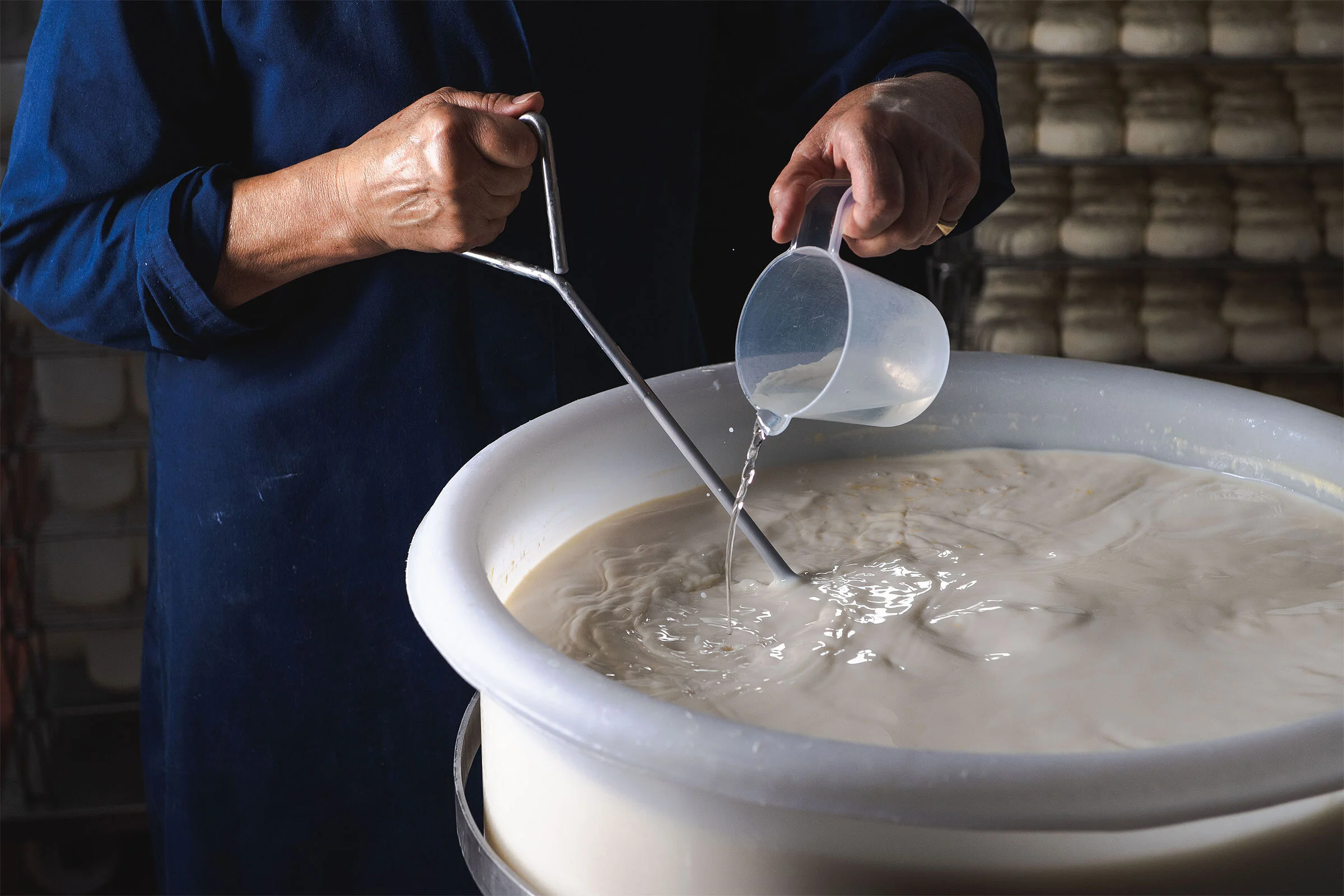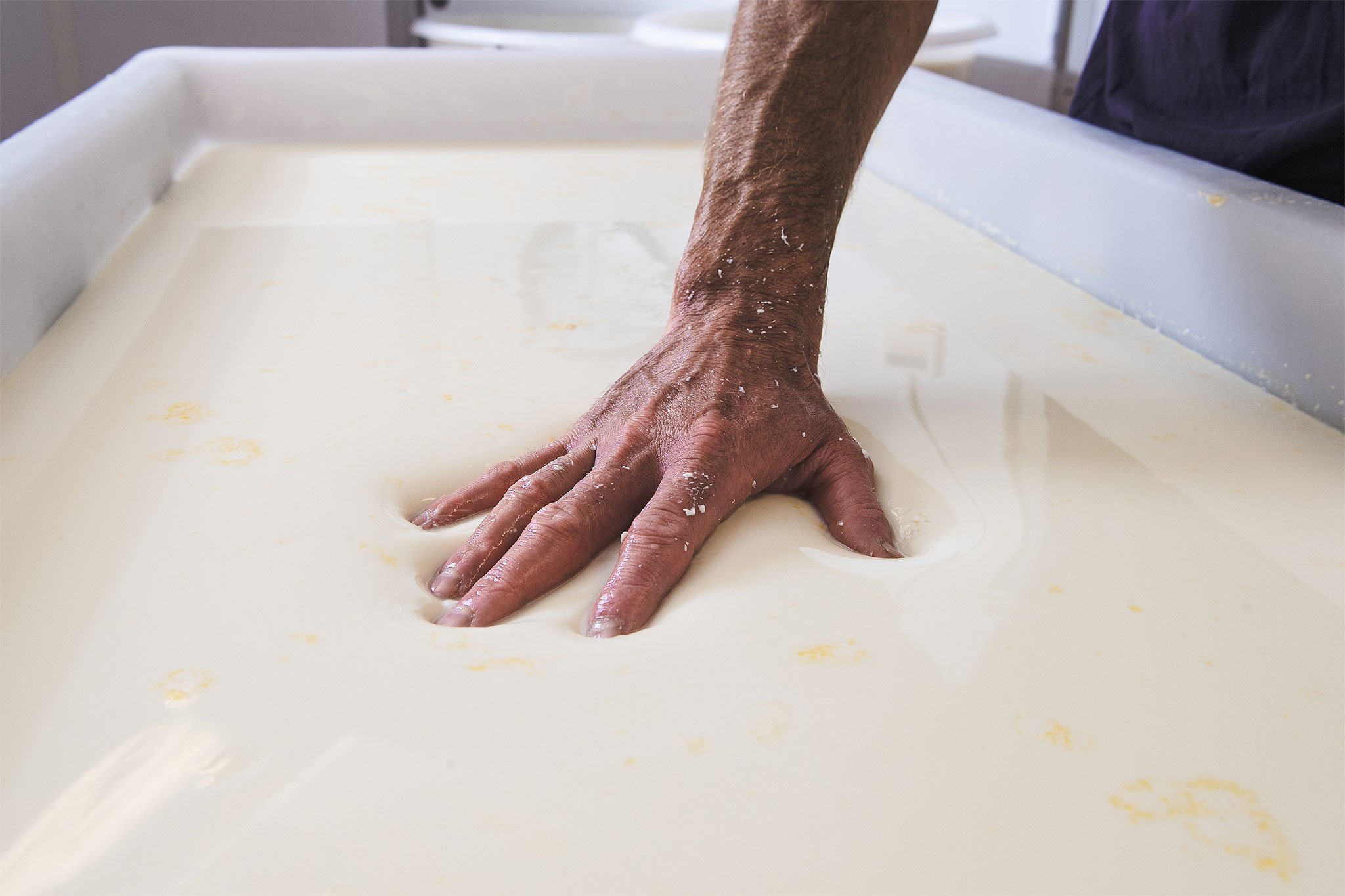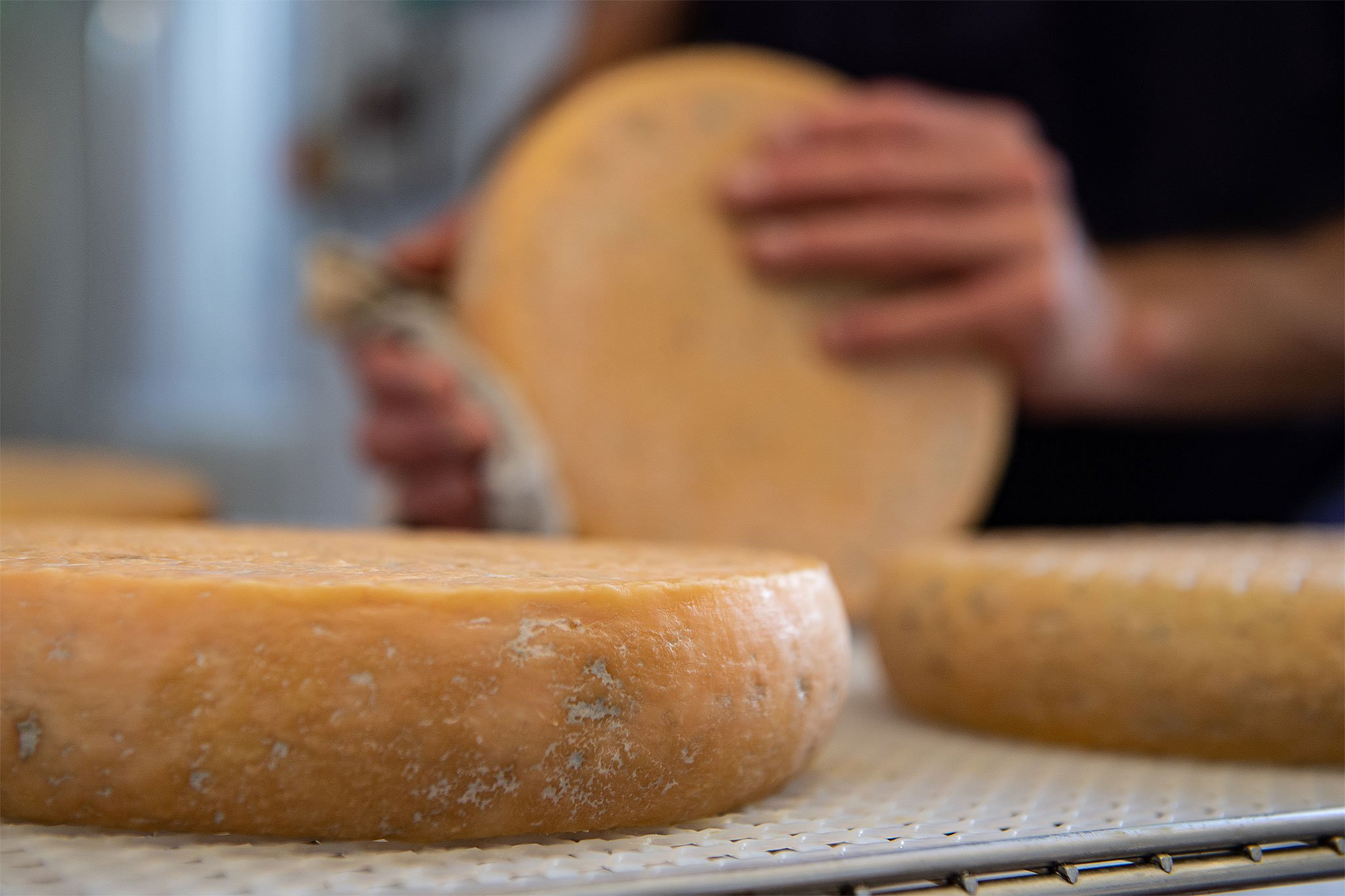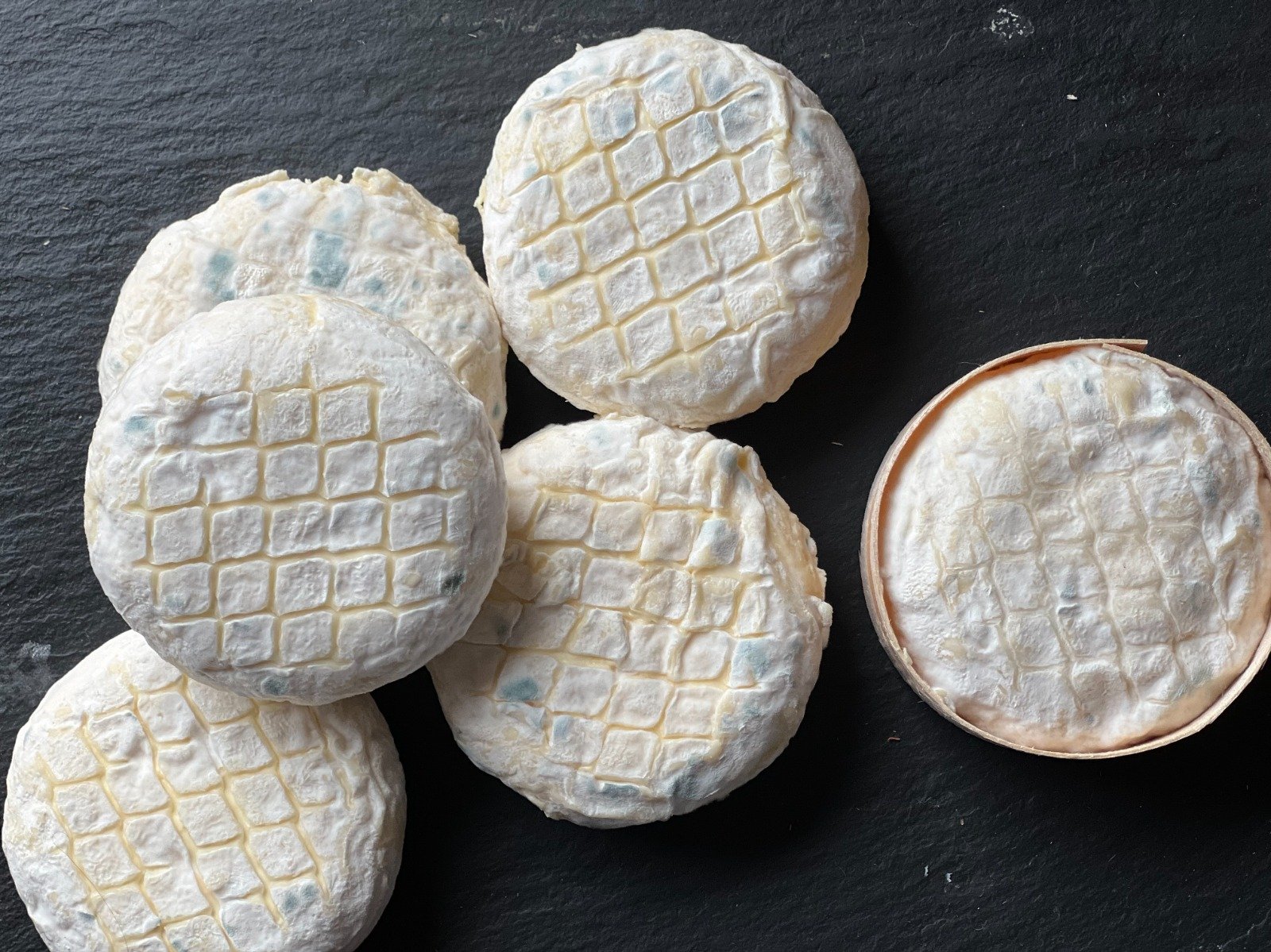Our lactic cheeses
Making a lactic style cheese is a slow, gentle process with a more fragile curd than a rennet based cheese. It is a time to be careful and thoughtful, a time to enjoy the warmth of the cheese room and milky scent of the curd. The fermentation process, from when the cultures are added to start the acidification of the milk, can take up to 24 hours before we ladle the curds. Conversely, the ripening of the formed cheese can be quite short as St.Jude can be enjoyed as young as 10 days old maturing into more complex flavours at up to 6-7 weeks old.
St.Helena
St.Helena is a semi soft cheese which is made with the passion and wizardry of Blake. The process of making St.Helena is quite different to the lactic cheeses. Within five hours the raw milk has been transformed into a cheese the shape of St.Helena. Blake’s care and attention of the milk, curds and maturation of St.Helena steer this cheese throughout the seasons which is equally delicious for the cheeseboard or to be cooked.
St.Helena is ready to be eaten from four weeks onwards. The matured cheese has a burnt orange rind which is integral to the flavour of the whole cheese, so please do eat and enjoy the rind along with the fudgy paste. The young St.Helena will taste fresh and bright, maturing to more nutty, brothy flavours. When the cows are out to pasture you will also find dry grass notes.
A bit of blue
Occasionally some natural blue mould will implant on our cheeses, except the St.Jude Curd cheese. This has been identified as a sub species of penicillium, is perfectly safe to eat and can typically be seen on the soft cheeses in the winter.
Blue mould, along with many others, is in the air all around us but usually the growth of the geotrichum covers the cheese rind and inhibits any development of the blue. Geotrichum is found naturally in the milk but we also add two strains during the cheesemaking process. This helps to grow a protective coat on the rind and also helps release the flavours within the paste.
























